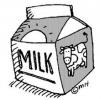Rb25Det Unique Problem
Announcements
-
Similar Content
-
Latest Posts
-
Depends how low and tyre size. Should fit with natural camber, skinny tyres and rolled guards.
-
By Peeeeetaaah · Posted
Hi guys, planning to get 18x9 +25 in fronts and 18x10 +25 in rears been reading the whole thread and cant really find anything Anyone know if these will fit a r34 gtt with no scrubbing or guard work needed? -
They usually get made by hand as part of any such swap.
-
Was planning on getting an R35 MAF and the adapter, should this be okay? Also any idea where I could get my hands on an intake pipe?
-
By joshuaho96 · Posted
I mean yes, if you're starting from scratch on an unknown engine yes you don't need to be doing all kinds of math in the background but if you're doing relatively minor changes like AFM + injectors + boost up with some aftermarket turbos it takes quite a bit of math if you want to do something like maintain OEM fuel + timing tables but compressed and then a bit more load scale up top. I think I've spent too much time working on big engineering nightmares though so I'm a big fan of trying to constrain the scope of whatever work I'm doing as much as possible and trying to get it right before moving on. For example, a local owner just did the usual E85 + single turbo conversion to his R32 GTR and nearly burned his car to the ground doing some spirited driving up the local mountains. Turbine is unshielded and too close to the hood insulation. It's tough to balance "just get the project done" and "seemingly small details can cause massive setbacks I'm not willing to deal with".
-




Recommended Posts
Create an account or sign in to comment
You need to be a member in order to leave a comment
Create an account
Sign up for a new account in our community. It's easy!
Register a new accountSign in
Already have an account? Sign in here.
Sign In Now